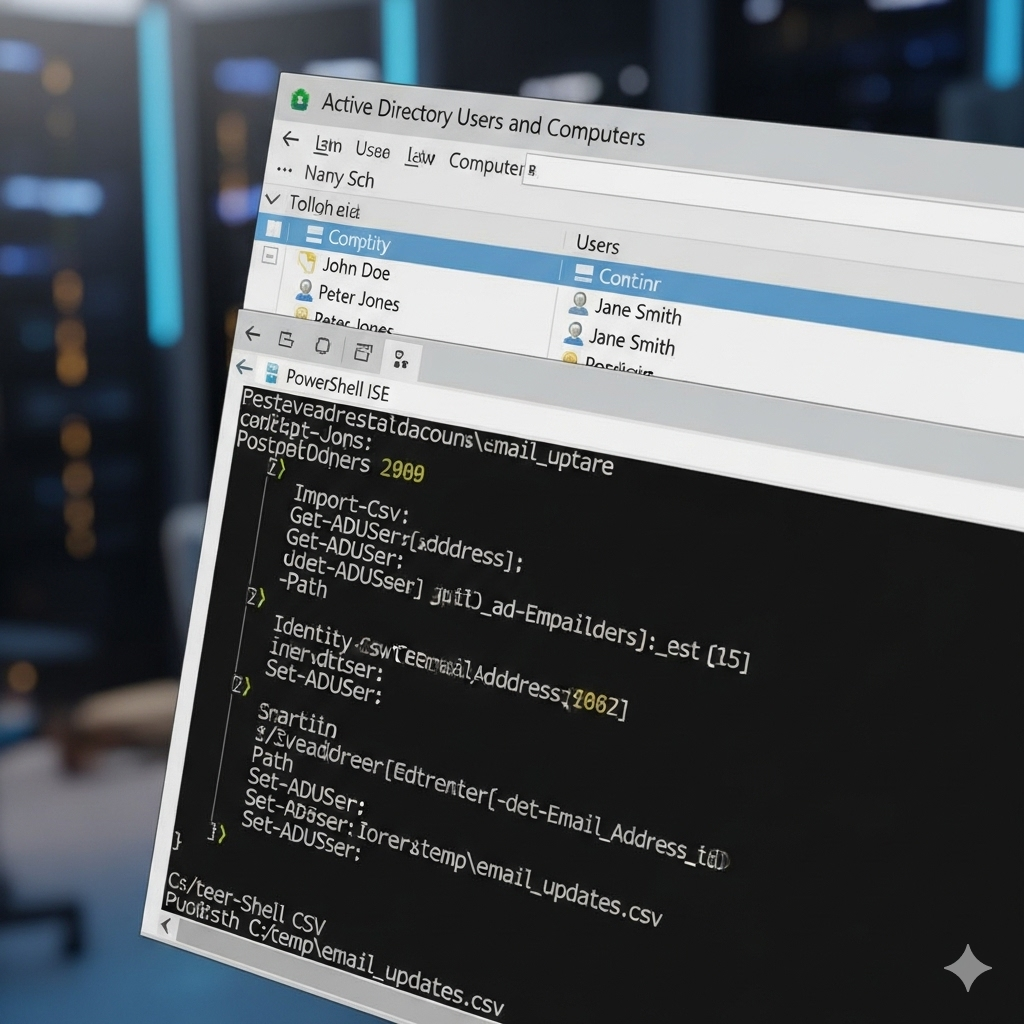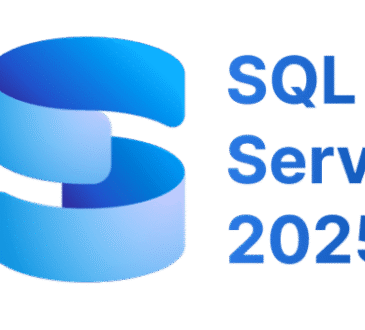How to Bulk Add Domain Users Email Address in Active Directory in Windows Server 2025

Table of Contents
Managing hundreds or thousands of user accounts in Active Directory can quickly become overwhelming, especially when you need to add email addresses to existing domain users. If you’ve ever found yourself manually updating user accounts one by one, you know the pain of this tedious process. Fortunately, Windows Server 2025 offers several efficient methods to bulk add email addresses to domain users in Active Directory.
In this comprehensive guide, I’ll walk you through three proven methods that will save you hours of manual work and reduce the risk of human error. Whether you’re migrating to a new email system, implementing a company-wide email policy, or simply need to update your directory, these techniques will streamline your workflow.
Why Bulk Adding Email Addresses Matters
Before diving into the technical details, let’s address why this capability is crucial for modern IT administrators. In today’s hybrid work environment, email addresses serve as more than just contact information – they’re essential for:
- Single Sign-On (SSO) authentication across cloud services
- Microsoft 365 integration and user provisioning
- Exchange Online mailbox creation and management
- Automated user provisioning in third-party applications
- Compliance reporting and user auditing
Manual email address assignment becomes impractical when dealing with large organizations, making bulk operations a necessity rather than a convenience.
Prerequisites and Preparation
Before we begin, ensure you have the following:
- Windows Server 2025 with Active Directory Domain Services installed
- Domain Administrator privileges or delegated permissions for user management
- Active Directory PowerShell module installed
- Remote Server Administration Tools (RSAT) if managing from a client machine
- CSV file with user data (for CSV import method)
- Backup of your Active Directory (always recommended before bulk operations)
Method 1: Using PowerShell for Bulk Email Assignment
PowerShell remains the most flexible and powerful method for bulk operations in Active Directory. Here’s how to implement this approach effectively.
Basic PowerShell Script for Single Domain
First, let’s start with a simple script that adds email addresses based on the user’s SamAccountName:
# Import Active Directory module
Import-Module ActiveDirectory
# Get all users in a specific OU (modify the SearchBase as needed)
$Users = Get-ADUser -Filter * -SearchBase "OU=Users,DC=yourdomain,DC=com" -Properties SamAccountName
# Loop through each user and add email address
foreach ($User in $Users) {
$EmailAddress = $User.SamAccountName + "@yourdomain.com"
Set-ADUser -Identity $User -EmailAddress $EmailAddress
Write-Host "Updated email for user: $($User.SamAccountName) to $EmailAddress"
}
Advanced PowerShell Script with Error Handling
For production environments, you’ll want more robust error handling and logging:
# Import required modules
Import-Module ActiveDirectory
# Define variables
$Domain = "yourdomain.com"
$SearchBase = "OU=Users,DC=yourdomain,DC=com"
$LogFile = "C:\Logs\EmailUpdate_$(Get-Date -Format 'yyyyMMdd_HHmmss').log"
# Create log directory if it doesn't exist
$LogDir = Split-Path $LogFile -Parent
if (!(Test-Path $LogDir)) {
New-Item -ItemType Directory -Path $LogDir -Force
}
# Function to write to log
function Write-Log {
param($Message)
$TimeStamp = Get-Date -Format "yyyy-MM-dd HH:mm:ss"
"$TimeStamp - $Message" | Out-File -FilePath $LogFile -Append
Write-Host "$TimeStamp - $Message"
}
try {
# Get users without email addresses
$Users = Get-ADUser -Filter {EmailAddress -notlike "*"} -SearchBase $SearchBase -Properties SamAccountName, EmailAddress
Write-Log "Found $($Users.Count) users without email addresses"
foreach ($User in $Users) {
try {
$EmailAddress = $User.SamAccountName + "@$Domain"
Set-ADUser -Identity $User -EmailAddress $EmailAddress -ErrorAction Stop
Write-Log "SUCCESS: Updated $($User.SamAccountName) with email $EmailAddress"
}
catch {
Write-Log "ERROR: Failed to update $($User.SamAccountName) - $($_.Exception.Message)"
}
}
}
catch {
Write-Log "FATAL ERROR: $($_.Exception.Message)"
}
Method 2: CSV Import for Complex Email Assignments
When you need more control over email address formats or have specific mapping requirements, CSV import provides the flexibility you need.
Preparing Your CSV File
Create a CSV file named users_email.csv with the following structure:
SamAccountName,EmailAddress,FirstName,LastName
jdoe,john.doe@company.com,John,Doe
asmith,alice.smith@company.com,Alice,Smith
bwilson,bob.wilson@company.com,Bob,Wilson
PowerShell Script for CSV Import
# Import required modules
Import-Module ActiveDirectory
# Define file path
$CSVFile = "C:\Scripts\users_email.csv"
$LogFile = "C:\Logs\CSVEmailImport_$(Get-Date -Format 'yyyyMMdd_HHmmss').log"
# Import CSV data
$UserData = Import-Csv -Path $CSVFile
foreach ($User in $UserData) {
try {
# Check if user exists
$ADUser = Get-ADUser -Identity $User.SamAccountName -ErrorAction Stop
# Update email address
Set-ADUser -Identity $User.SamAccountName -EmailAddress $User.EmailAddress -ErrorAction Stop
Write-Host "Updated: $($User.SamAccountName) -> $($User.EmailAddress)" -ForegroundColor Green
"$((Get-Date).ToString('yyyy-MM-dd HH:mm:ss')) - SUCCESS: Updated $($User.SamAccountName) with $($User.EmailAddress)" | Out-File -FilePath $LogFile -Append
}
catch {
Write-Host "Failed: $($User.SamAccountName) - $($_.Exception.Message)" -ForegroundColor Red
"$((Get-Date).ToString('yyyy-MM-dd HH:mm:ss')) - ERROR: $($User.SamAccountName) - $($_.Exception.Message)" | Out-File -FilePath $LogFile -Append
}
}
Method 3: Using Active Directory Administrative Center (GUI Method)
While PowerShell is more efficient for large-scale operations, the GUI method can be useful for smaller batches or when you prefer visual confirmation.
Step-by-Step Process
- Open Active Directory Administrative Center
- Launch from Server Manager or run
dsac.exe - Navigate to your domain
- Launch from Server Manager or run
- Select Multiple Users
- Hold
Ctrland click to select multiple users - Or use
Shiftto select a range of users
- Hold
- Bulk Edit Properties
- Right-click on selected users
- Choose “Properties” from the context menu
- Navigate to the “Organization” tab
- Enter the email address pattern (limited customization)
Note: This method has limitations and works best when all users follow the same email pattern.
Advanced Scenarios and Best Practices
Handling Multiple Email Addresses
Some organizations require users to have multiple email addresses (aliases). Here’s how to handle this scenario:
# Adding additional email addresses to the proxyAddresses attribute
$Users = Get-ADUser -Filter * -SearchBase "OU=Users,DC=domain,DC=com"
foreach ($User in $Users) {
$PrimaryEmail = $User.SamAccountName + "@company.com"
$AliasEmail = $User.SamAccountName + "@company.local"
# Set primary email
Set-ADUser -Identity $User -EmailAddress $PrimaryEmail
# Add to proxyAddresses (for Exchange)
$ProxyAddresses = @("SMTP:$PrimaryEmail", "smtp:$AliasEmail")
Set-ADUser -Identity $User -Replace @{proxyAddresses=$ProxyAddresses}
}
Email Format Standardization
Different organizations have different email naming conventions. Here’s a flexible approach:
function Generate-EmailAddress {
param(
[string]$FirstName,
[string]$LastName,
[string]$Domain,
[string]$Format = "FirstLast" # Options: FirstLast, First.Last, LastFirst, etc.
)
switch ($Format) {
"FirstLast" { return ($FirstName + $LastName + "@" + $Domain).ToLower() }
"First.Last" { return ($FirstName + "." + $LastName + "@" + $Domain).ToLower() }
"LastFirst" { return ($LastName + $FirstName + "@" + $Domain).ToLower() }
"FirstInitialLast" { return ($FirstName.Substring(0,1) + $LastName + "@" + $Domain).ToLower() }
default { return ($FirstName + "." + $LastName + "@" + $Domain).ToLower() }
}
}
# Usage example
$Users = Get-ADUser -Filter * -Properties GivenName, Surname
foreach ($User in $Users) {
if ($User.GivenName -and $User.Surname) {
$Email = Generate-EmailAddress -FirstName $User.GivenName -LastName $User.Surname -Domain "company.com" -Format "First.Last"
Set-ADUser -Identity $User -EmailAddress $Email
}
}
Duplicate Email Detection
Prevent duplicate email addresses with validation:
function Test-EmailUnique {
param([string]$EmailAddress)
$ExistingUser = Get-ADUser -Filter {EmailAddress -eq $EmailAddress} -ErrorAction SilentlyContinue
return ($null -eq $ExistingUser)
}
# Use in your script
if (Test-EmailUnique -EmailAddress $ProposedEmail) {
Set-ADUser -Identity $User -EmailAddress $ProposedEmail
} else {
Write-Warning "Email $ProposedEmail already exists, skipping user $($User.SamAccountName)"
}
Conclusion
Bulk adding email addresses to Active Directory users in Windows Server 2025 doesn’t have to be a daunting task. Whether you choose PowerShell for maximum flexibility, CSV import for precise control, or the GUI method for simplicity, the key is to plan your approach carefully and test thoroughly.
Remember that PowerShell scripting offers the most robust solution for large-scale operations, while the CSV method provides excellent control for complex scenarios. Always prioritize testing, logging, and validation to ensure your bulk operations complete successfully without impacting your production environment.
- Design



![Windows Server 2025 LTSC [10.0.26100.7171] Version 24H2 4 Windows Server 2025 LTSC [10.0.26100.7171] Version 24H2](https://vmorecloud.com/wp-content/uploads/2025/12/Windows-Server-2025-365x330.jpg)

